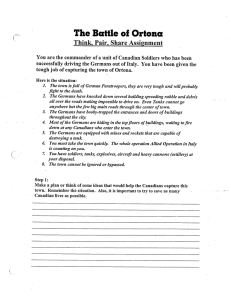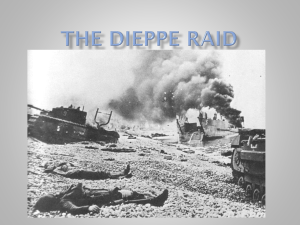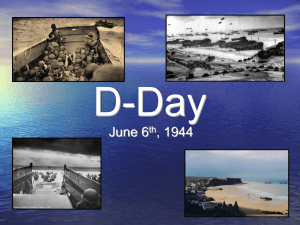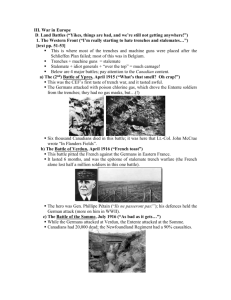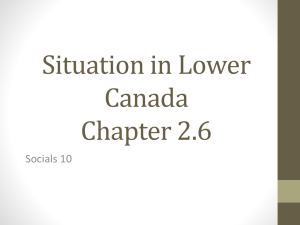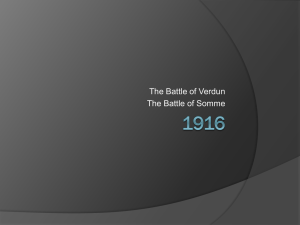The Major Battles of World War I
advertisement
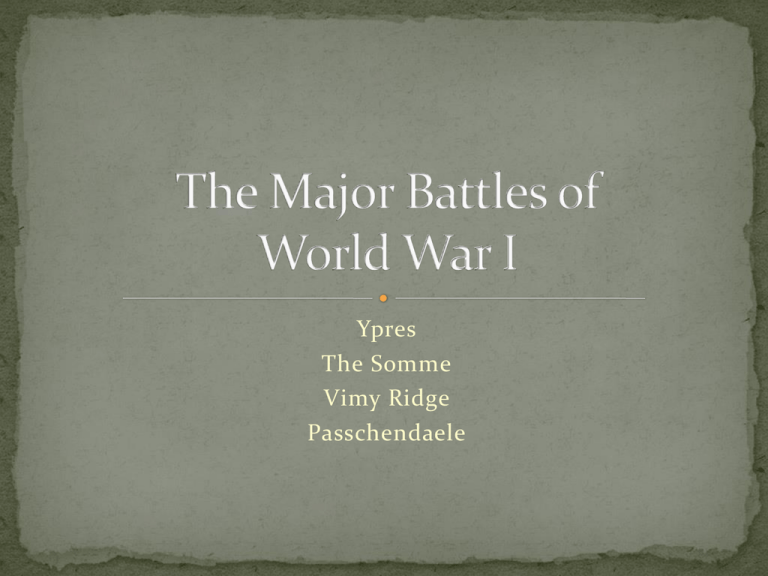
Ypres The Somme Vimy Ridge Passchendaele April – May, 1915 Ypres, Belgium Germans released 5 730 cylinders of chlorine gas Unprepared, the French division fled, leaving the Canadians to fight. Despite many Canadian casualties, the Allies saved the situation 2 days later, the Germans released gas on the Canadians. Those in St. Julien were overrun; the Candians in Ypres held on Fighting continued for 3 weeks. In the attempt to hold off the enemy attack, over 59 000 were lost for the sake of positions that had little strategic value. It was after this battle that Lieutenant-Colonel John McCrae composed “In Flanders’ Fields” July – November, 1916 Somme, France The plan was for a joint British-French assault on the Somme (Western Front) Many French were killed protecting the French fortress of Verdun in February, making it difficult to participate in the Somme offensive The British went ahead with their “Big Push” The Germans were waiting as 100 000 British troops advanced from the trenches in full daylight. In one day, almost 58 000 were killed, wounded or missing. It was the biggest disaster in British military history. Troops came to help from the First Newfoundland Regiment, and soldiered on bravely. The Canadians entered the “bloodbath” in September, fighting through many German defensive lines The Canadians finally managed to capture Regina Trench on November 11, despite the mud and deaths in the thousands. April 9-12, 1917 The battle began at Douai Plains, Nord-Pas- 5:28am on Easter Monday, April 9. The Canadians took one objective after another, in spite of heavy machine gun fire The Canadians took over 4 000 prisoners and achieved one of the greatest victories in the war up to that time de-Calais region, France Strategic place for Germans, had fortified it for 3 years Oct – Nov, 1917 The objective was to Passchedaele, near Ypres, capture German submarine bases on the Belgian coast. The Germans’ position was firm, and the British suffered appalling casualties. The Canadians were called to lead one more attack. Belgium The battlefield was a muddy bog, and brought back memories of Ypres. Attempts to rebuild roads , gun platforms, etc. were slowed by German aircraft bombs. At 5:40am on Oct. 26, the Canadians attacked, but could not secure the area. Attacks during late October and early November brought much suffering, but led to the Canadians securing many German strong points.




